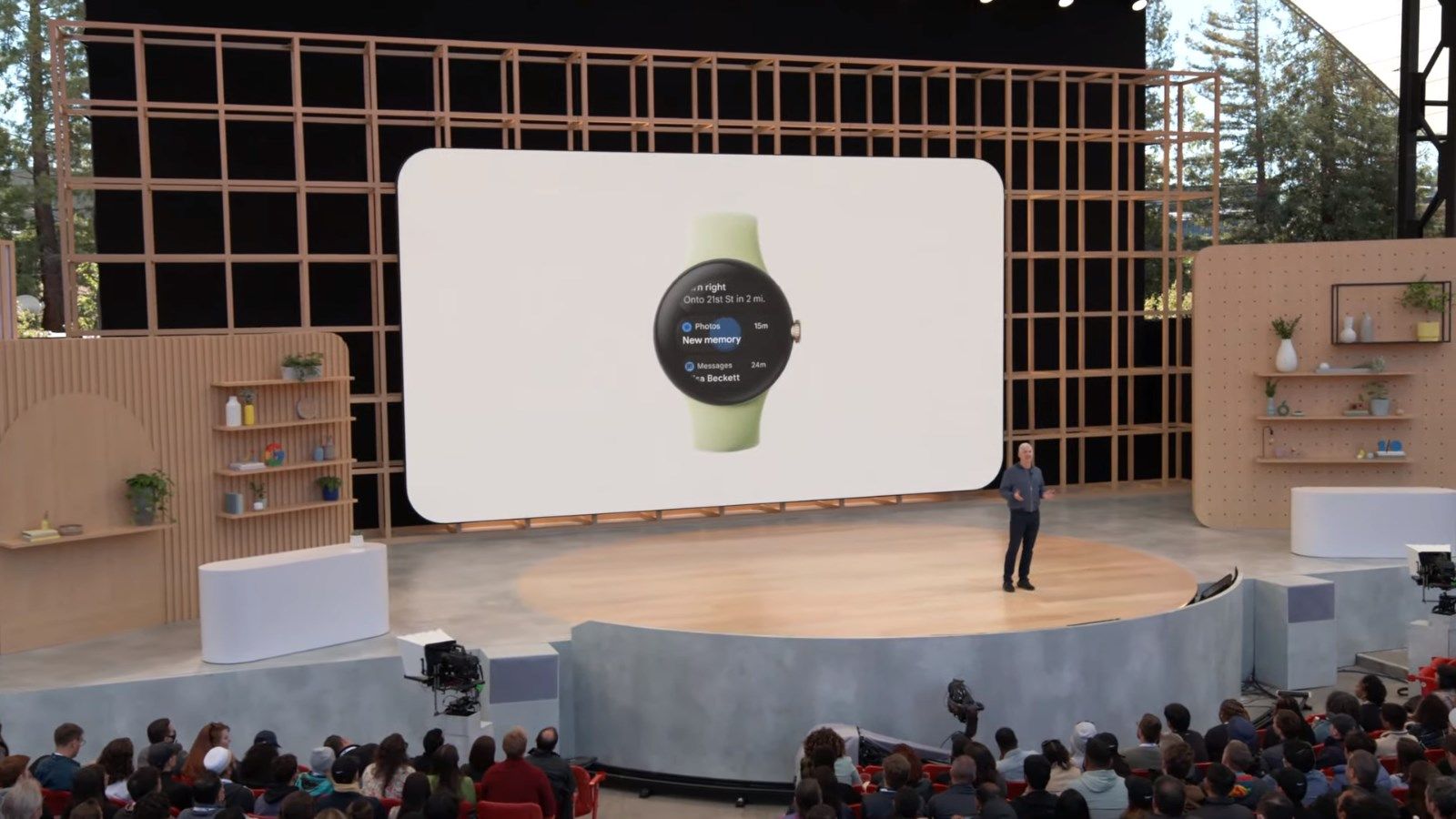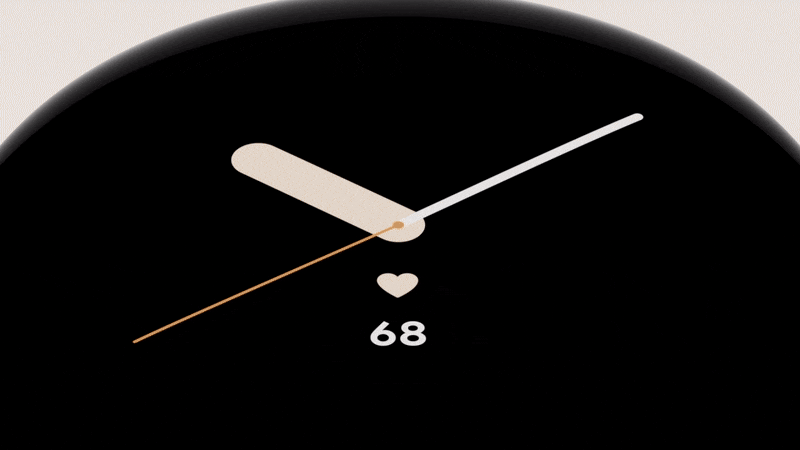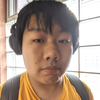
Wear OS followers need a little credit. They have survived for almost a decade through patterns of starting and stopping investments in Google’s platform, and half-baked native apps and features have been broken for longer than anyone would admit. But if that were the case for users, think about how much junk the third-party developers were struggling to serve them. Today, Pixel Watch and Jetpack Compose for Wear OS will reinject relevance into the operating system, so we’ll talk to developers who are using the platform from the beginning to find out what has changed in the development of Wear OS apps. Year.
Known as DYNA Logix in most places, Greg Viczian has been closely involved with what’s known as Android Wear since its inception, creating watch faces and other applets, most notably dual mode. A highly customizable Bubble Cloud launcher — an app with over 1 million total installs.
Edited Viczian’s answer to the interview question for readability.
The era of Android Wear
The first few years of Android Wear were exciting, but incredibly frustrating for developers who were forced to protect themselves.
“In the early versions of Android Wear (1.x), the SDK was much more limited, there was less documentation, and there was little information about the developer forums,” Viczian said.
But as a developer wanting to go upstairs, Viczian had to get things for himself. Bubble Cloud has provided users with some of the most utilities and customizations that the Wear app package can offer throughout the year. The community eventually grew around Android Wear, and he was able to leverage some homemade libraries to further enhance its capabilities. He also spent a lot of time complaining from the power user audience, especially battery and memory consumption. Both assets are premium with a small form factor, but they are also in high demand given the purpose for which people use watches: checking time.
However, the novelty and public curiosity about the platform has rapidly diminished, and by the time Google announces Android Wear 2.0 in 2017, it’s catching up seriously.
“Google has added a clock-specific library due to the complexity of the clock face, brought in billing and network-related libraries, and received material theme and design guidelines.”
But the same perceptual aura of fatigue began some time later. When Google revamped Android Wear to Wear OS and introduced Tiles UI in 2019, developers quickly created their own APIs and distributed them before the official release in 2021. The builder-based implementation was “terrifying”.
The change is a-happenin
This year, Google seemed to be embarking on the development of wearables. It let Samsung go and help Wear OS 3.0 to persuade Samsung to grease their arms for face makers in apps and watches.
It’s exciting to see Google’s growing interest in Wear OS, including updated APIs, guidelines, and tools. I was also very happy that Samsung withdrew to Wear OS.
The Android Studio experience has been significantly improved to allow you to pair your phone with an emulated Wear device or debug it over Wi-Fi. Even the Tiles API has been restructured into a more acceptable format. The Health Services API is of particular interest to Viczian. He plans to use this API to improve the power efficiency of the inactive reminder app Stand-up Alert.
Developers are also excited that Jetpack Compose has been specially tuned for Wear OS. But he’s not going to rush to convert an existing project, especially given the pile of old code running Bubble Cloud.
I started developing this app in 2014. Some of the core parts of the app are 7-8 years old. At that time, there was no Kotlin and no material design. There have been many changes since the start of this project, and making everything work and familiar is becoming a challenge-long-time users (some of my favorite members of the user community have existed from the beginning). At the same time, we will continue to appeal the app to the new Galaxy Watch crowd, not to mention the preparation of the Pixel Watch.
Bubble Cloud was back when Android was still heavily integrated into Java’s class inheritance model. It took some time for Google to fully accept JetBrains’ Kotlin language and its complementary Jetpack Compose toolkit. Ultimately, the company announced that it would choose Kotlin as the Android language in 2019. However, we need to move to a function-oriented mindset. It takes a lot of effort to apply it to the existing features of Bubble Clouds. In addition to having to look for an alternative to the obsolete API, you can imagine a situation similar to a birthday cake illuminated by an indelible gag candle.
Due to API changes, rewriting parts of the app always feels verbose. Not broken, why fix it? Over the years, we needed to update how background services work and how Rotary input is handled. We have redesigned the UI several times, but we plan to redesign another UI. The tile feature still uses the unofficial API by Stringmon and it’s still before me to convert it to the official API. I’m still using the obsolete Complication Data library. At this point, it seems to be more reliable than the new recommended API, but eventually you need to switch.
What will happen to the future
Still, there are good reasons for Viczian’s wait-and-see approach. He was testing several Compose libraries for the FatFinger Scribble Calculator app and found that the app’s bundle size increased by more than 40%. This is far from ideal for almost all Wear OS watches with 4GB of native storage.
“What you get from shortening development work can negatively impact the quality of your app with respect to key development priorities,” Viczian told me.
And if OEM-level support fails, that development can be wasted. Viczian quoted many issues being developed on the Galaxy Watch 4. This includes the loss of many features associated with the complexity of third-party apps, and the ability to hide permanent notifications. It’s on top of other apps, so you’ll need permanent notifications. Watch4 didn’t include such a feature, so he even needed to integrate burn-in protection into a watch face that was always on.
But with Google’s new attitude towards Wear OS and first-party devices that almost certainly get the attention and support it deserves, the platform appears ready to rejuvenate existing developer-based trust. But we welcome new ones in the creases. And with eight years of Stack Overflow threads and GitHub sample repositories scattered across the internet, we hope that novices will find it more fun and easier to create apps than Viczian and other Wear veterans. ..
Read next



.jpg)


Commentaires
Enregistrer un commentaire